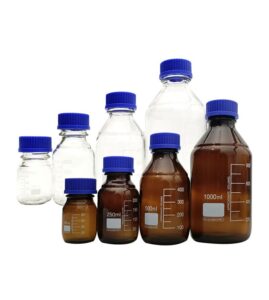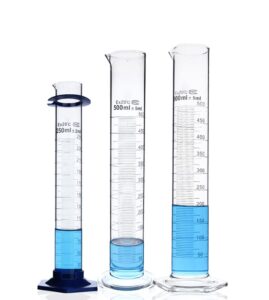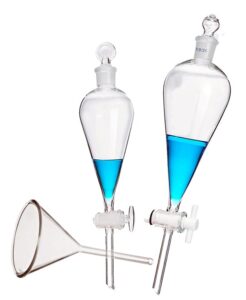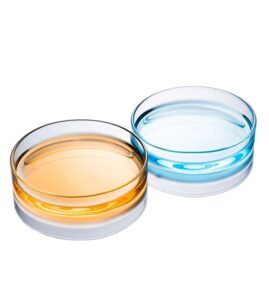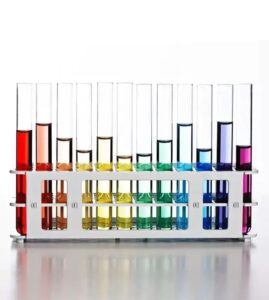Have you ever wondered what goes into the design and development of the glassware that holds the future of scientific discovery? The journey from concept to lab bench is both fascinating and crucial in shaping the future of research. As we look ahead, how will laboratory glassware evolve to meet the ever-growing demands of science?
The future of laboratory glassware is geared towards enhancing the efficiency, safety, and precision of research activities. Innovations in materials, manufacturing techniques, and design philosophy are not just refining existing equipment but are paving the way for new forms of scientific exploration.
Let’s explore the key aspects shaping the future of laboratory glassware design and development.

Mastering the Craft: The Journey of Laboratory Glassware Development
The development of laboratory glassware is a meticulous and evolving process, reflecting the ongoing quest for precision, safety, and efficiency in scientific research. From conceptual design to final product distribution, each step is crucial in shaping the tools that are essential to scientific discovery and innovation. This journey combines the art of craftsmanship with the precision of science, resulting in instruments that are not only functional but also reliable and effective.
1. Understanding the Needs of Modern Research
Modern research demands glassware that is more than just a container. It requires designs that facilitate complex experiments, ensure user safety, and increase reproducibility. Identifying these needs is the first step in revolutionizing glassware. It involves close collaboration between scientists who understand the intricacies of their work and designers who can translate these needs into functional products.
- Clarify Design Purpose: Understand the intended purpose and usage of the glass instrument, such as for chemical reactions, sample storage, or experimental operations. This helps in formulating a corresponding design plan and approach.
- Determine Technical Specifications: Based on the design purpose and practical needs, establish the technical parameters and performance requirements the glass instrument must meet, such as size, precision, high-temperature resistance, and corrosion resistance.
2. Innovating with Materials
The choice of material is critical in glassware design. Select suitable glass and auxiliary materials based on technical specifications and practical needs, such as borosilicate glass, quartz glass, or polytetrafluoroethylene (PTFE). Different materials have varying characteristics and should be chosen according to specific requirements.
While traditional materials like borosilicate glass continue to be popular due to their durability and resistance to chemicals and temperature changes, emerging materials offer new possibilities. Advances in glass composites, coatings, and treatments can lead to glassware that is more resistant to breakage, easier to clean, or even capable of self-repair.
3. Optimizing Glassware Design for Laboratory Precision
Designing the structure and shape of laboratory glassware is a pivotal step in ensuring its efficacy and safety in research settings. This process is guided by the instrument’s intended use and various technical considerations.
Purpose and Function: The design begins with identifying the glassware’s specific role, whether for mixing, heating, or storing substances, shaping its volume and form for optimal performance.
Technical Adaptability: Material selection and design must account for required durability, temperature, and chemical resistance to ensure longevity and reliability under different experimental conditions.
User-Friendly Operation: Ergonomics are crucial; glassware should be easy to handle, with features like stable bases and clear markings for accurate usage and minimal risk during handling.
Visibility and Sealability: Clear observation and precise measurements are key, necessitating transparent materials and accurate gradations. Designs must also incorporate effective sealing mechanisms to prevent contamination and maintain sample integrity.
4. Refining Techniques: Selecting the Right Processing Methods
Choosing the appropriate processing techniques is crucial in shaping the glass instrument’s final form and function. Techniques like cutting, grinding, drilling, and polishing must be tailored to the specific needs of the glassware’s design and intended use. The choice of processing technique directly affects the instrument’s performance, influencing factors such as clarity, durability, and chemical resistance. This step requires a careful consideration of the material’s properties and the desired outcome to ensure the glassware meets all technical requirements.
5. Prototyping: Bringing Design to Reality
Creating a prototype is a critical step in bringing the conceptual design to tangible reality. This involves meticulous material processing to achieve the desired precision, surface quality, and sealability. The prototype serves as a physical representation of the design, allowing for an initial assessment of its functionality and revealing areas that may require further refinement. Attention to detail during this stage sets the foundation for a successful final product.
6. Assessing Performance: Rigorous Testing and Evaluation
Once the prototype is complete, it undergoes a series of tests to evaluate its performance against the defined criteria. Testing may include examining the instrument’s precision, stability, corrosion resistance, and overall safety. This step is vital in verifying that the glassware not only meets the expected performance targets but also adheres to safety and quality standards. The results from this evaluation inform any necessary adjustments or enhancements to the design.
7. Refinement: Optimizing Design for Excellence
Based on the insights gained from testing and evaluation, the glass instrument’s design is optimized and improved. This may involve tweaking the structure, selecting alternative materials, or adjusting the processing techniques. The aim is to enhance the instrument’s performance, durability, and ease of use, ensuring it not only meets but exceeds research needs and user expectations. This iterative process of refinement is what leads to the production of high-quality, reliable glassware.
8. Scaling Up: Small Batch Production and Validation
After the design has been optimized, a small batch of glass instruments is produced. This allows for validation of the design and manufacturing process in real-world applications. Testing the instruments in actual laboratory settings provides valuable feedback on their practical performance and usability. This stage is crucial for verifying the design’s feasibility and making any final adjustments before larger scale production.
9. Mass Manufacturing: Industrial Production and Distribution
Once the design has been validated and perfected, the glass instrument enters industrial-scale production. This phase focuses on maintaining the stability of the production process and ensuring consistent quality across all products. Efficient and reliable manufacturing is key to producing glassware that meets the industry’s high standards and satisfies user demands. Distribution then brings these instruments into laboratories worldwide, supporting the broader scientific community.
10. Evolution: Continuous Improvement and Innovation
The development of laboratory glassware is a never-ending cycle of improvement and innovation. As scientific techniques and technologies evolve, so too must the instruments that support them. Continuous feedback from the market and users, coupled with advances in materials and processing technologies, drive the ongoing optimization and upgrading of glassware. This commitment to evolution ensures that laboratory instruments keep pace with the ever-advancing field of scientific research, meeting the changing needs and increasing demands of users.
As we delve into each stage, it’s clear that the development of laboratory glassware is more than just a manufacturing process—it’s a journey of innovation, precision, and continuous improvement. This journey not only shapes the glass instruments themselves but also the future of scientific exploration and discovery. By understanding and refining each step, we ensure that the tools at the heart of the laboratory are capable of supporting the critical work of researchers today and in the future. For those looking to equip their laboratories with the finest glassware, consider Winson, a trusted supplier in the field. Discover more about their offerings at here.

Emphasizing User-Centric Design
The ergonomics of glassware can significantly impact the efficiency and safety of research. Future designs will likely emphasize user comfort, reduce the risk of accidents, and facilitate easier measurement and handling. This might include features like anti-slip coatings, ergonomic grips, and designs that minimize strain during repetitive tasks.
Integrating Advanced Technologies
The integration of technology into glassware—such as embedded sensors for temperature, pH, or chemical detection—can transform passive containers into active tools of research. These “smart” glassware items will provide real-time data to researchers, allowing for more precise control and monitoring of experiments.
Enhancing Durability and Sustainability
As the global emphasis on sustainability grows, so does the need for durable and eco-friendly glassware. Future development might focus on materials and designs that are not only long-lasting but also recyclable or made from renewable resources. Additionally, manufacturing processes may evolve to reduce waste and energy consumption.
Streamlining Production and Customization
The advancement in manufacturing technologies such as 3D printing offers the promise of custom glassware designed to fit unique experimental needs. This could lead to a more personalized approach, where researchers can order glassware tailored to their specific requirements, improving the overall efficiency and effectiveness of scientific research.

Continuous Testing and Improvement
Continuous testing and iterative design are crucial in ensuring that new glassware meets the highest standards of quality and safety. This involves rigorous testing under real-world conditions, feedback from users in the field, and ongoing improvements to design and material composition.
Fostering Collaboration Between Disciplines
The development of future laboratory glassware is not just the domain of material scientists or designers; it requires a multidisciplinary approach. Engineers, chemists, physicists, and even end-users must work together to create solutions that are innovative and practical. This collaborative approach ensures that glassware is not only technically advanced but also meets the real-world needs of researchers. By fostering a culture of collaboration, the industry can accelerate the development of new ideas and ensure they are refined and practical for laboratory use.
Adopting Global Standards
As science becomes more interconnected, the need for standardized glassware becomes increasingly important. Adopting global standards for size, shape, compatibility, and safety can facilitate international research collaboration and ensure consistency in scientific experiments across the world. This does not stifle innovation; rather, it provides a common framework within which creativity and functionality can flourish.

Prioritizing Safety and Compliance
Safety is paramount in laboratory environments. Future glassware must not only adhere to stringent safety standards but also contribute to a safer laboratory environment. This includes resistance to breakage, chemical inertness, and stability under extreme conditions. Compliance with international safety and quality standards will also be crucial, ensuring that glassware is reliable and trustworthy for all users.
Educating the Next Generation
As laboratory glassware evolves, so too must the education of those who will use it. Incorporating training on the latest glassware technologies, materials, and safety practices into science curriculums will prepare the next generation of researchers. Education doesn’t stop at the university level; ongoing training for professionals in the field will ensure that all researchers can utilize the latest advancements effectively and safely.
Looking to the Future
The development of laboratory glassware is an ongoing journey, reflecting the evolving needs of research and the continuous advancement of science and technology. As researchers seek to explore the unknown and tackle complex problems, the tools they use must evolve to support their quest. The future of laboratory glassware is not just about new shapes or materials; it’s about creating tools that empower researchers to do their best work, safely and effectively.
Conclusion
As we continue to push the boundaries of scientific exploration, the evolution of laboratory glassware stands as a testament to human ingenuity and the relentless pursuit of precision and safety. Embrace the future by equipping your research with the most advanced, efficient, and sustainable glassware on the market. Explore, innovate, and transform your scientific endeavors with cutting-edge solutions that redefine what’s possible in the laboratory. The future is here, and it’s clearer, safer, and more efficient than ever – join us in revolutionizing research with every experiment you conduct.




